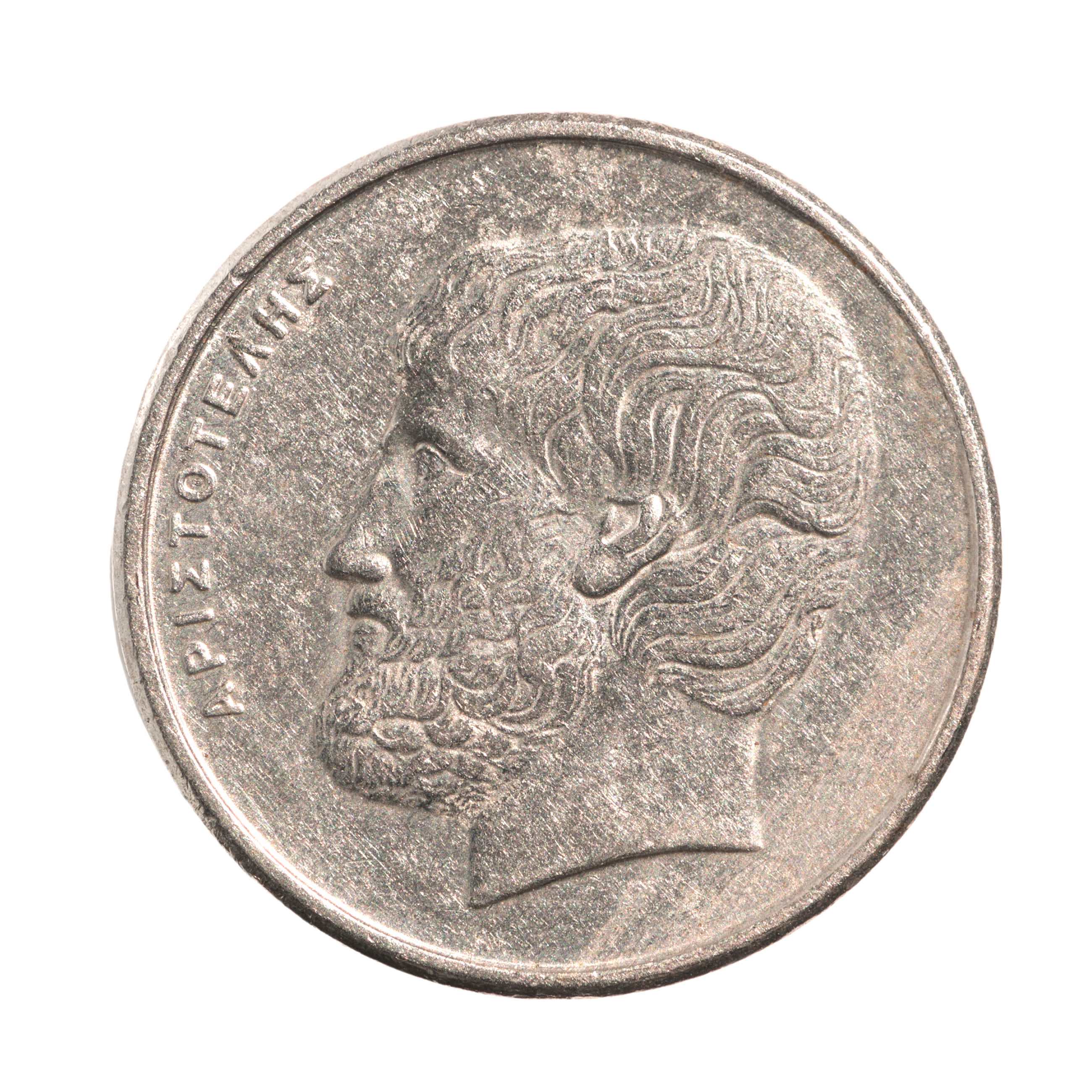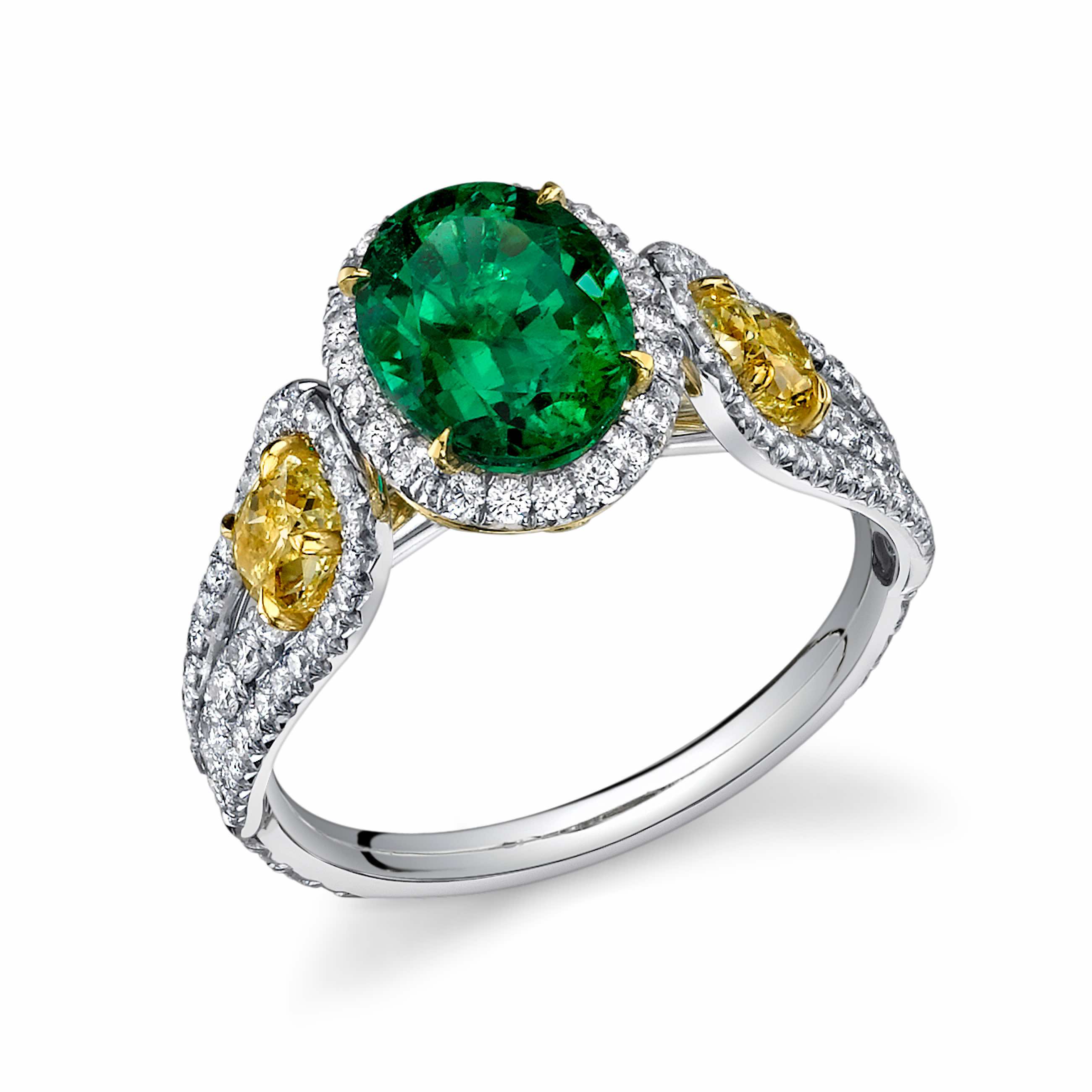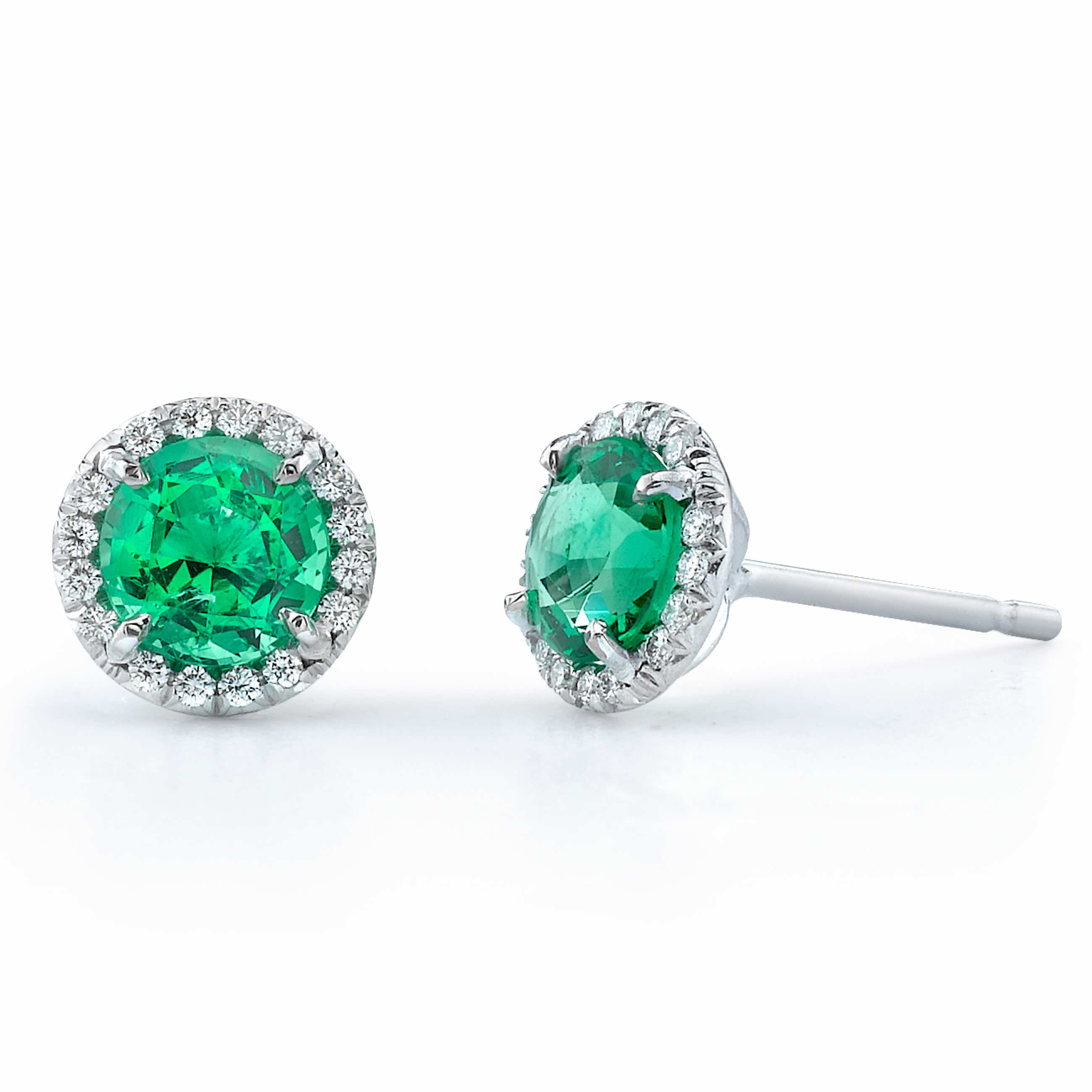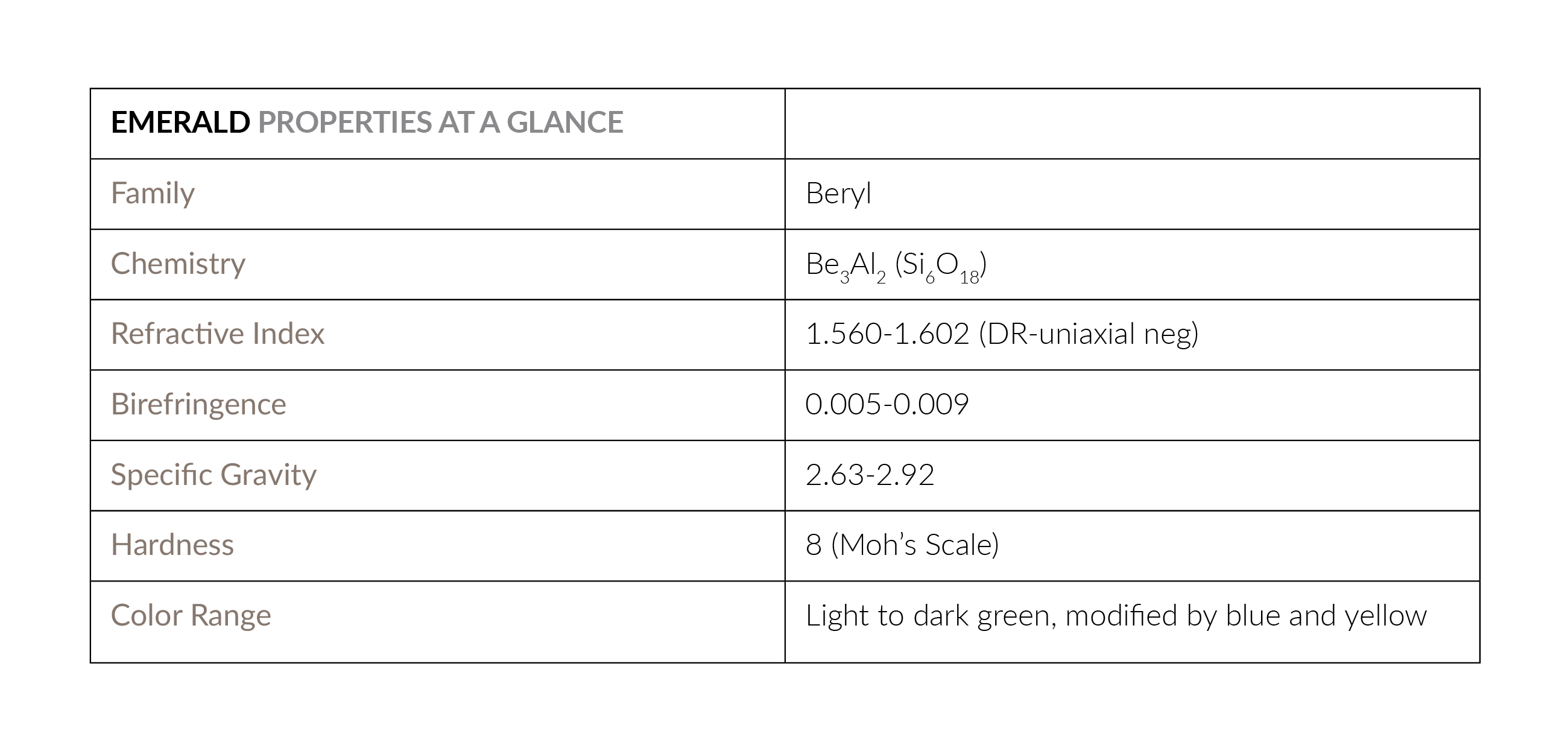
EMERALD: May Birthstone

ROMANCE, HISTORY & LORE
Almost every civilization has treasured the beauty of the emerald. 3500 years before Christ, the Ancient Egyptians scoured Cleopatra’s Mines for this precious green gem. The Incas and Aztecs honored the emerald with use in religious rituals. Aristotle believed that emeralds bestowed the gift of eloquence and protected its wearer against bodily harm.
Long revered for its deep green color, emerald remains one of the most precious gemstones available. Tranquil, mysterious, and mesmerizing, emerald evokes calm, confidence, and rejuvenation.

ORIGINS
Approximately 60% of the world’s emerald production comes from Colombia. While there are hundreds of known emerald deposits, there are three main mines: Muzo, Coscuez, and Chivor. Of the three, Muzo is renowned for its superior color, and Cosquez the greatest quantity. Chivor, where the Incas first discovered emerald, is now privately held.
Fine emeralds also originate in Brazil, including rare emerald cat’s eyes and trapiche emeralds featuring a six-spoked star.
Africa, especially Zambia, is emerging as a major source of fine emeralds. In Zambia, the emeralds are a deep, mysterious green and because of their relatively inclusion free nature, are seldom oiled. Zimbabwe also produces emeralds of an intense and vivacious hue, but which are generally much smaller.


In Central Asia, the Hindu Kush mountain range is rich with an extensive variety of gems and minerals, including emerald.
In the United States, the Emerald Hollow Mine in North Carolina is not an important producer of emerald, but it is the only emerald mine in the world open for prospecting.
SELECTING A STONE
Alongside ruby and sapphire, emerald is revered as one of the “precious three” gemstones. Loved for its velvety, cool green that soothes the eye, emerald is universally appealing and easily complements every complexion.
Because emeralds are considerably less dense than diamonds, rubies, and sapphires, an emerald of equal carat size will be substantially larger than any of its precious counterparts. Furthermore, since emeralds are prized for their color instead of their brilliance, most emeralds are cut wide rather than deep, which adds to the gem’s sizeable appearance.


One of emerald’s key characteristics is its tendency toward inclusions. Emerald aficionados affectionately refer to the numerous crystal inclusions, cracks or fissures as “jardin,” after the French word for “garden.” Small inclusions do not diminish an emerald’s value. To the contrary – an included emerald with a deep, full color still has a much higher value than a flawless emerald of pale color. Some people actually prefer an emerald with jardin over a flawless emerald because it proves authenticity. And besides, even lightly included emeralds are far rarer than flawless diamonds.
The shape of the emerald crystals as they emerge from the earth are often elongated or squat hexagonal shapes the signature cut of this gemstone has become known as an “emerald” cut. The square or rectangular step cut style cut minimizes the pressure the gem must undergo while being cut, and the angled corners buffer the gem against blows while being worn. Although emeralds may be cut into many classic shapes, the biggest, best, and rarest examples are almost always emerald cut.

ENHANCEMENTS
Since emeralds often have numerous inclusions and surface fissures, almost all emeralds are enhanced with an oil treatment. The exception is Zambian emeralds, which have a clearer structure and are not likely to be enhanced with oils. Clear oils, most frequently cedar oil, is applied to the stone to fill surface cracks and enhance its apparent clarity and beauty. Green tinted oil is not considered acceptable.
The level of treatment – on a scale of none, minor, moderate to highly enhanced – does affect the buying and selling price of an emerald. The U.S. Federal Trade Commission requires the disclosure of oil treatment during an emerald’s sale.


CARE
Although emerald is a relatively hard gemstone, its internal jardin leaves it susceptible to damage if worn carelessly. Most emerald jewelry is worn only on special occasions, lending to its elegance and sophistication.
Emerald jewelry should never be placed in jewelry cleaning solutions, and never subjected to the force of steam or the vibration of an ultrasonic cleaner.
The safest and most effective way to clean emerald jewelry is with a soft brush and gentle solution of dish detergent and warm water. Let the pieces air dry on a soft cloth, and store until the next wear.

